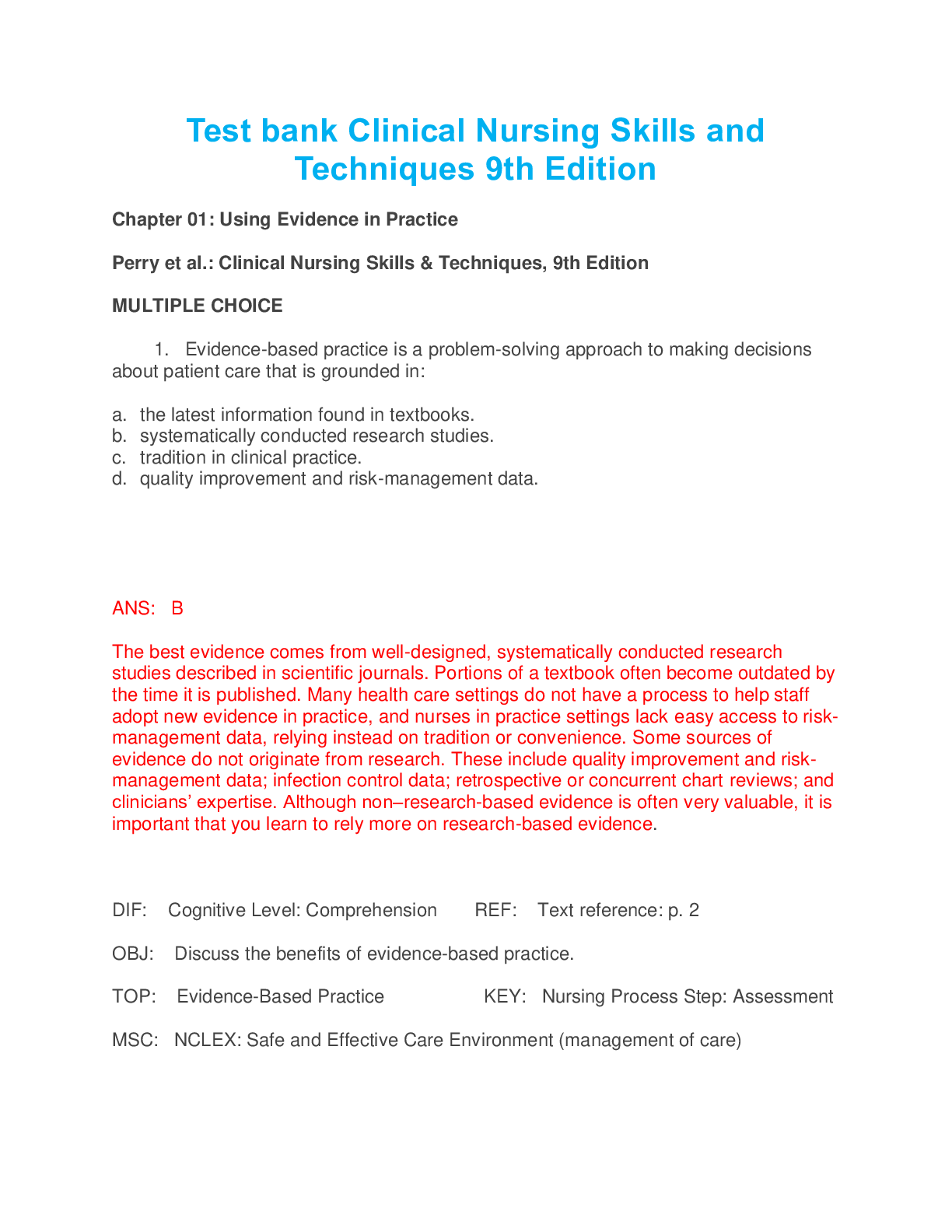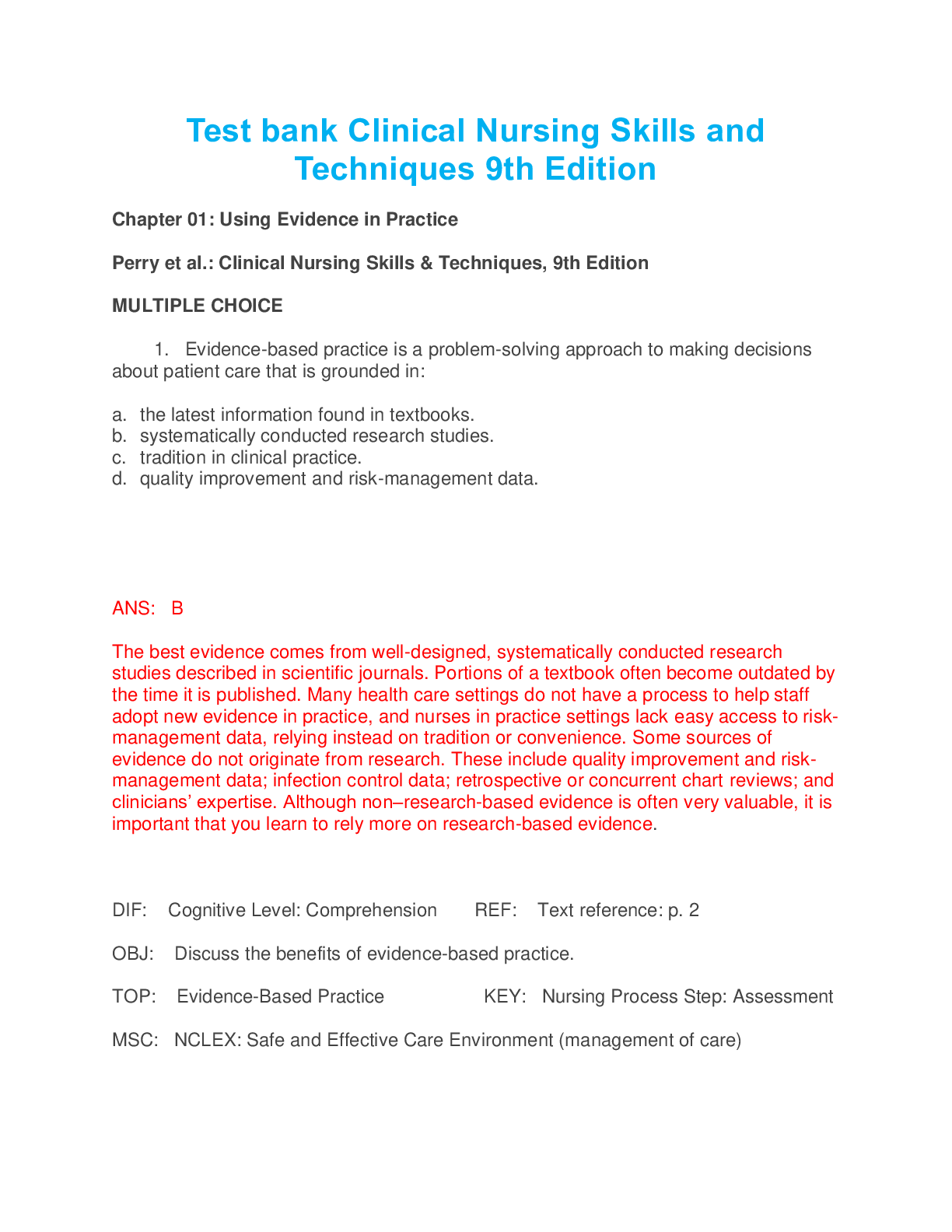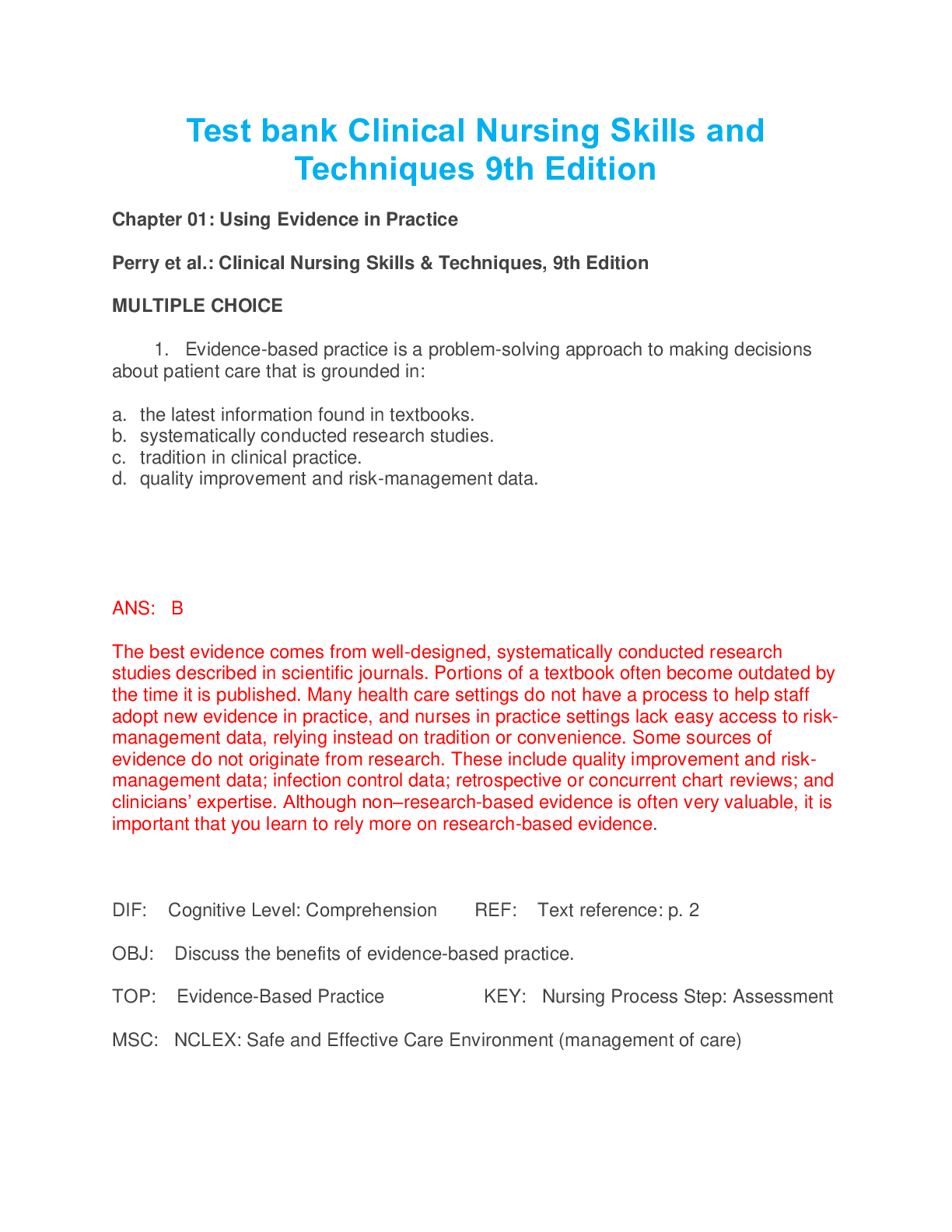*NURSING > QUESTIONS & ANSWERS > Health Assessment Perry et al.: Clinical Nursing Skills & Techniques, 9th Edition (All)
Health Assessment Perry et al.: Clinical Nursing Skills & Techniques, 9th Edition
Document Content and Description Below
Chapter 06: Health Assessment Perry et al.: Clinical Nursing Skills & Techniques, 9th Edition MULTIPLE CHOICE 1. The nurse is visiting the patient for the first time this shift. She introduces hers... elf and asks the patient several questions related to his condition. While doing so, and without being obvious, she is looking at the color of his eyes and is assessing his ears and nose for discharge and the symmetry of his mouth. Which assessment technique is the nurse using? a. Palpation b. Percussion c. Inspection d. Auscultation Inspection is the visual examination of body parts or areas. An experienced nurse learns to make multiple observations, almost simultaneously, while becoming very perceptive of abnormalities. Palpation uses the sense of touch. Percussion involves tapping the body with the fingertips to evaluate the size, borders, and consistency of body organs and to discover fluid in body cavities. Auscultation is listening with a stethoscope to sounds produced by the body. DIF: Cognitive Level: Application REF: Text reference: p. 108 OBJ: Describe the techniques used with each assessment skill. TOP: Inspection KEY: Nursing Process Step: Implementation MSC: NCLEX: Physiological Integrity 2. The patient is admitted with fever and acute lower abdominal pain. He has taken Tylenol but says he still feels feverish. Before taking the patient’s temperature, the nurse may: a. touch the patient’s skin with the dorsum of her hand. b. touch the patient’s skin with the pads of her fingers. c. palpate the skin using the bimanual method. d. tap the patient’s skin using the fingertips. ANS: A The dorsum (back) of the hand is more sensitive to temperature variations. The pads of the fingertips detect subtle changes in texture, shape, size, consistency, and pulsation of body parts. Bimanual palpation involves one hand placed over the other while pressure is applied. The upper hand exerts downward pressure as the other hand feels the subtle characteristics of underlying organs and masses. Seek the assistance of a qualified instructor before attempting deep palpation. Percussion involves tapping the body with the fingertips to evaluate the size, borders, and consistency of body organs and to discover fluid in body cavities. DIF: Cognitive Level: Application REF: Text reference: p. 108 OBJ: Describe the techniques used with each assessment skill. TOP: Palpation KEY: Nursing Process Step: Implementation MSC: NCLEX: Physiological Integrity 3. What should the nurse do when preparing to complete an assessment for a 16-year-old patient? a. Focus on illness behaviors. b. Plan for a diminished energy level. c. Treat the patient as an individual. d. Have the parents present throughout. Older children and adolescents tend to respond best when treated as adults and individuals and often can provide details about their health history and severity of symptoms. Routine examinations of children have a focus on health promotion and illness prevention, particularly in the care of well children with competent parenting and no serious health problems. The focus is on growth and development, sensory screening, dental examination, and behavioral assessment. Children who are chronically ill, disabled, in foster care, or foreign-born adopted may require additional assessment. The adolescent has a right to confidentiality. After talking with the parents about historical information, the nurse arranges to be alone with the adolescent to speak further privately and to perform the examination. DIF: Cognitive Level: Application REF: Text reference: p. 112 OBJ: Describe how to conduct a physical examination on patients from diverse cultures. TOP: Children and Adolescents KEY: Nursing Process Step: Implementation MSC: NCLEX: Physiological Integrity 4. In providing a physical assessment of an 88-year-old patient, the nurse should: a. do it as quickly as possible to prevent fatigue. b. assume that the patient will have disabilities. c. prepare to perform a mental status examination. d. always do the exam in the small exam room to prevent chills. Inclusion of a review of mental status is highly recommended when the nurse performs an examination of an older adult. Allow extra time, and be patient, relaxed, and unhurried with older adults. Do not assume that aging is always accompanied by illness or disability. Older adults are able to adapt to change and to maintain functional independence. Provide adequate space for an examination, particularly if the patient uses a mobility aid. DIF: Cognitive Level: Application REF: Text reference: p. 112 OBJ: Describe how to conduct a physical examination on patients from diverse cultures. TOP: Older Adults KEY: Nursing Process Step: Implementation MSC: NCLEX: Physiological Integrity 5. The general survey begins with a review of the patient’s primary health problems and an evaluation of the patient’s vital signs, height and weight, general behavior, and appearance. It also provides information about the patient’s illness, hygiene, skin condition, body image, and emotional state. Which of the following cannot be delegated to nursing assistive personnel? a. Reporting subjective signs and symptoms b. Measuring the patient’s height and weight c. Monitoring I&O [Show More]
Last updated: 2 years ago
Preview 1 out of 19 pages
.png)
Buy this document to get the full access instantly
Instant Download Access after purchase
Buy NowInstant download
We Accept:

Reviews( 0 )
$7.00
Can't find what you want? Try our AI powered Search
Document information
Connected school, study & course
About the document
Uploaded On
Jun 05, 2021
Number of pages
19
Written in
Additional information
This document has been written for:
Uploaded
Jun 05, 2021
Downloads
0
Views
98


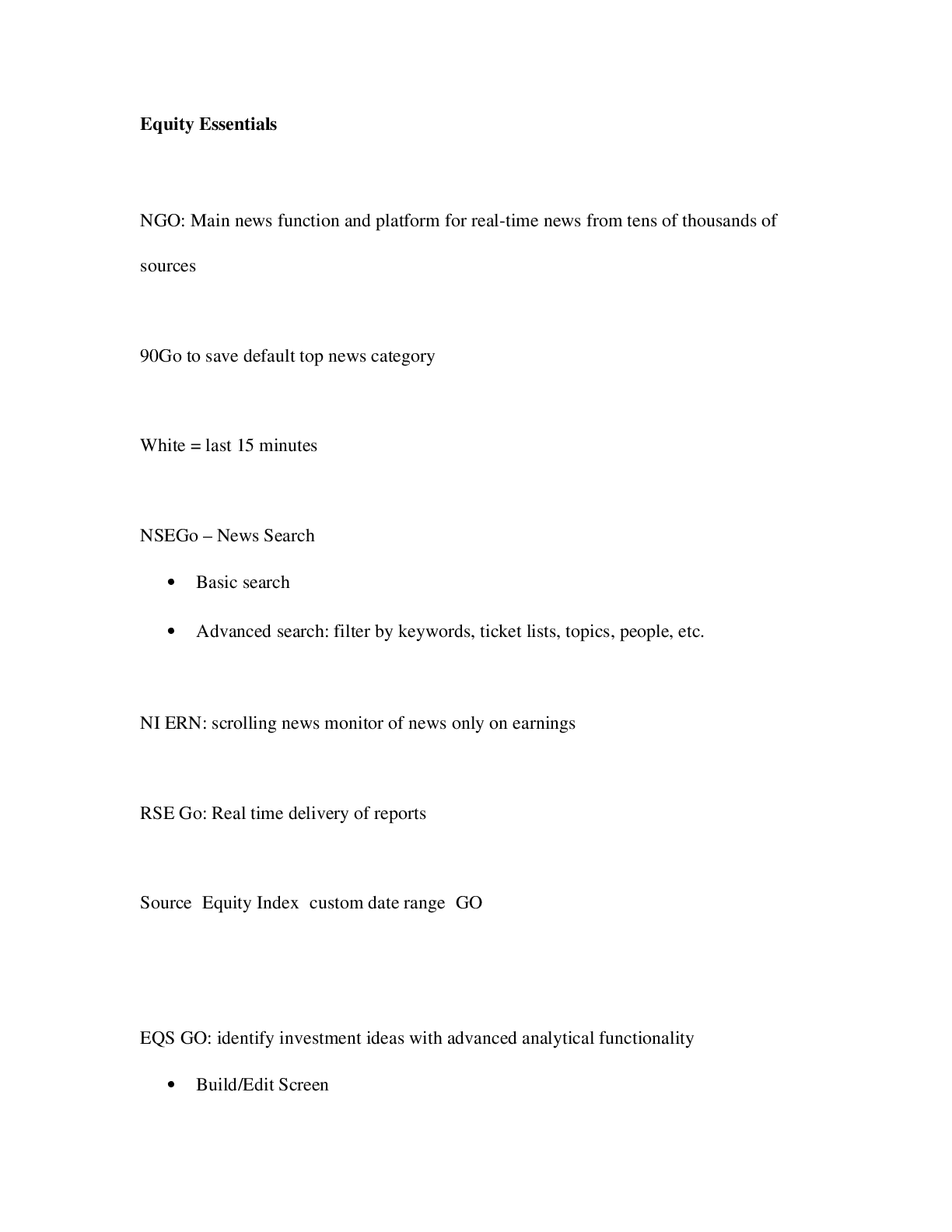

.png)



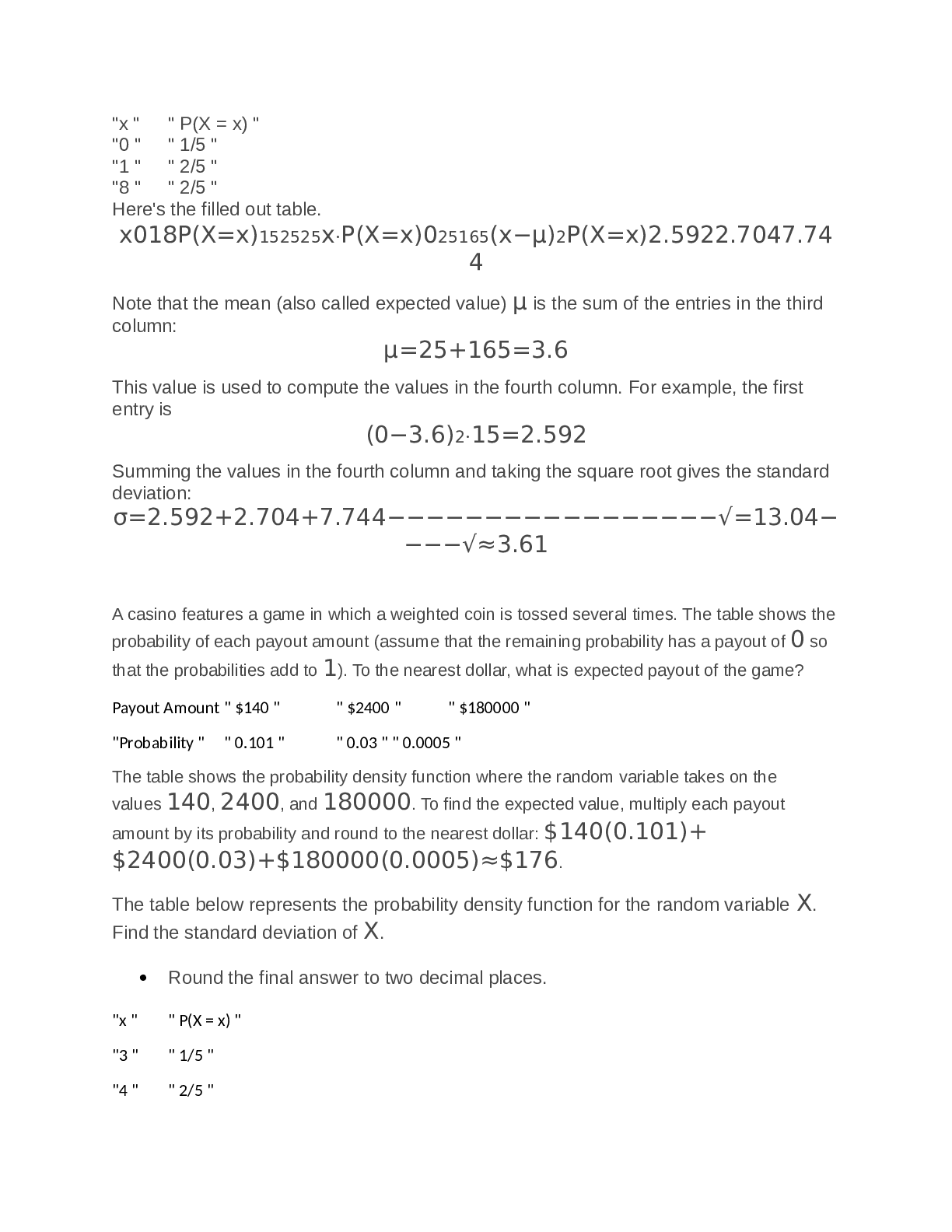
.png)

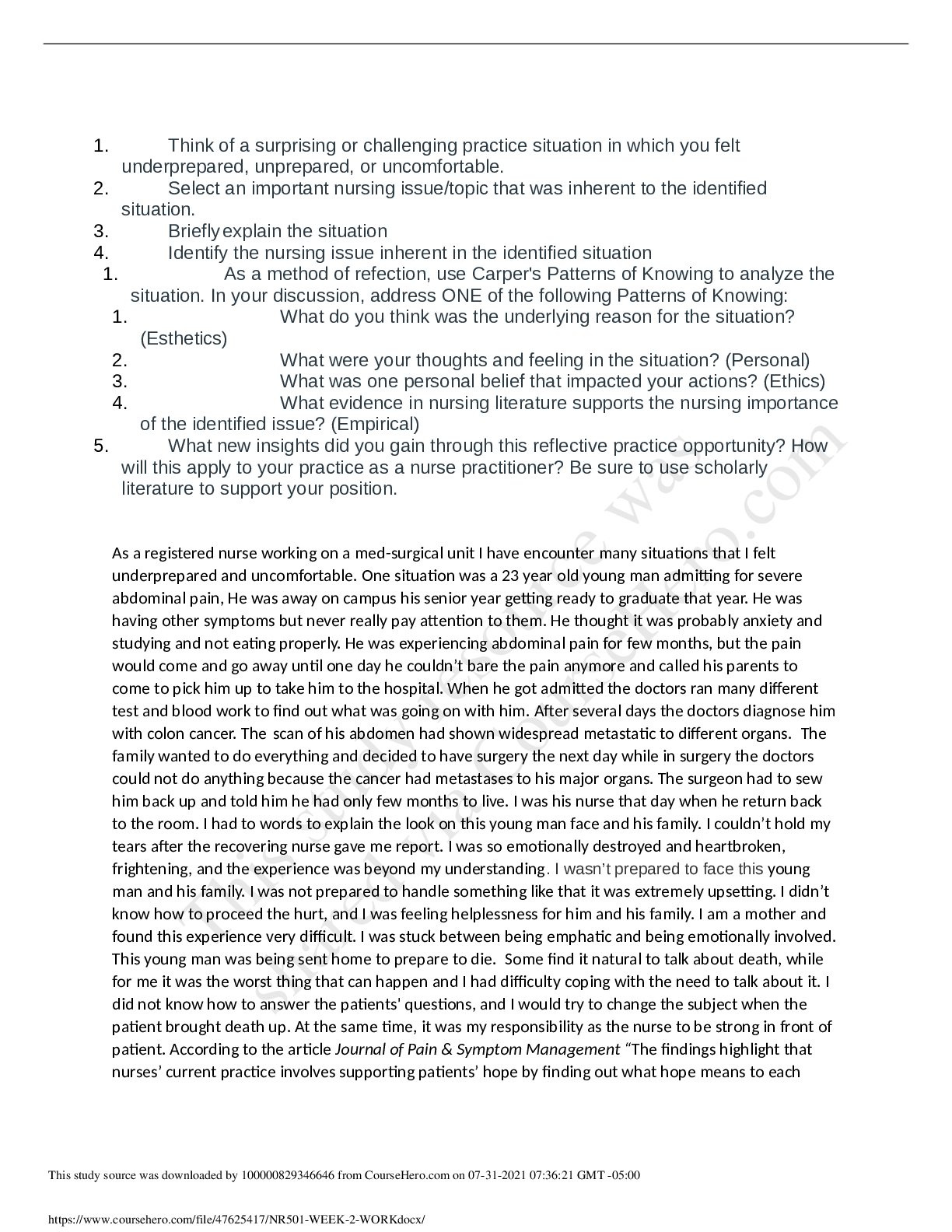

.png)
_compressed.png)
 (1).png)

